Basics of Red Light Therapy and Scientific Principles
1. What is Red Light Therapy?
Red light therapy (RLT), also known as low-level light therapy (LLLT) or photobiomodulation, is a non-invasive treatment that uses specific wavelengths of red and near-infrared light to enhance cellular function and promote healing. The core principle of RLT revolves around the interaction between light and the mitochondria, the energy-producing components of cells. By penetrating the skin at varying depths, red and near-infrared light stimulate biological processes that lead to improved cellular energy production and tissue repair.
Key Mechanisms:
- Photobiomodulation: RLT influences cellular activity by stimulating the mitochondria to produce more ATP (adenosine triphosphate), the molecule responsible for storing and transferring energy in cells.
- Increased Blood Flow: The light exposure improves microcirculation, allowing better delivery of oxygen and nutrients to tissues.
- Reduction of Oxidative Stress: RLT helps balance free radicals and antioxidants, reducing cellular damage.
2. Wavelengths and Their Roles
The efficacy of red light therapy depends largely on the wavelengths of light used. Different wavelengths target specific depths and functions:
- Red Light (630-660nm):
Red light penetrates the upper layers of the skin, targeting superficial tissues. It is particularly effective in promoting collagen production, reducing wrinkles, and improving skin tone. - Near-Infrared Light (810-850nm):
Near-infrared light penetrates deeper into tissues, muscles, and even bones. It is commonly used for reducing inflammation, alleviating pain, and enhancing recovery in deeper tissues.
3. Key Benefits of Red Light Therapy
- Health and Recovery:
- Stimulates mitochondrial function, increasing energy production and cellular repair.
- Accelerates wound healing and tissue regeneration.
- Alleviates chronic pain and reduces inflammation in joints and muscles.
- Skin and Beauty:
- Promotes collagen synthesis, which enhances skin elasticity and reduces fine lines.
- Minimizes the appearance of scars, stretch marks, and hyperpigmentation.
- Improves overall skin texture and radiance.
- Mental Health and Sleep:
- Regulates circadian rhythms and improves sleep quality.
- Reduces stress and alleviates symptoms of anxiety and depression.
- Athletic Performance and Recovery:
- Enhances muscle recovery by reducing oxidative stress and inflammation.
- Improves physical performance through better blood circulation and energy efficiency.
4. Scientific Research and Evidence
Red light therapy is supported by extensive research conducted in medical, cosmetic, and athletic fields. Some notable studies include:
- Wound Healing: Research published in The Journal of Clinical and Aesthetic Dermatology highlights RLT’s ability to accelerate wound closure and improve tissue regeneration.
- Pain Relief: Studies in Pain Research and Management confirm the effectiveness of RLT in managing chronic pain conditions like arthritis and fibromyalgia.
- Skin Rejuvenation: Trials in Photomedicine and Laser Surgery demonstrate that RLT significantly boosts collagen production and reduces visible signs of aging.
- Athletic Recovery: Findings in The International Journal of Sports Medicine show improved muscle recovery and reduced soreness post-exercise.
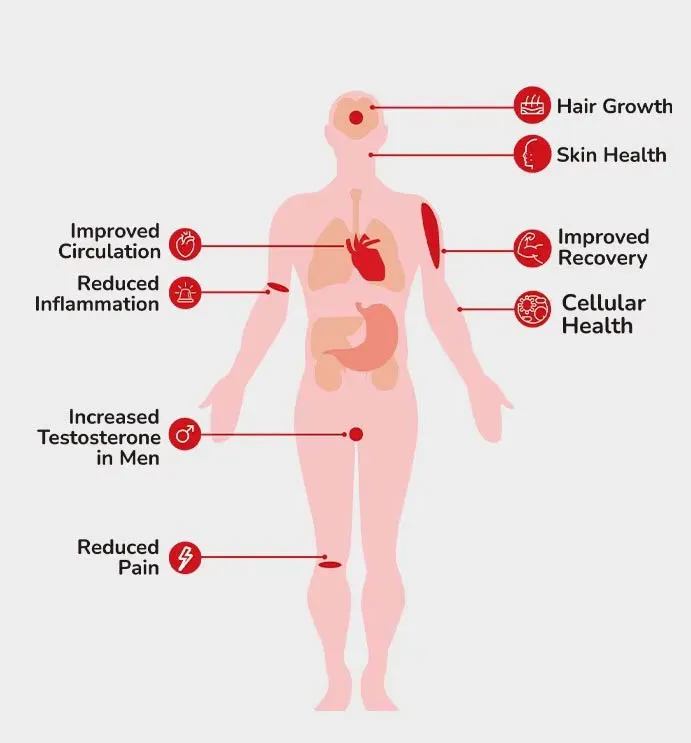
Applications of Red Light Therapy
Red Light Therapy (RLT) has rapidly gained popularity across multiple sectors, ranging from gyms to medical practices, due to its effectiveness in promoting recovery, enhancing beauty, and improving overall wellness.
RLT in Gyms
The inclusion of Red Light Therapy in gyms has revolutionized the fitness industry, providing members with an accessible way to enhance recovery, reduce muscle soreness, and improve overall performance. Several major gym chains now offer RLT-based services, each with its unique twist on therapy.
Main Offerings:
- Planet Fitness: “Total Body Enhancement”
- Planet Fitness offers a “Total Body Enhancement” service, which combines Red Light Therapy with vibration plates. This service is designed to stimulate blood circulation and promote muscle recovery while providing the aesthetic benefits of improved skin tone and elasticity.
- User Experience: Many users report noticeable improvements in muscle recovery after intense workouts, as well as enhanced skin texture. However, the treatment is only available to Black Card members, which limits access for non-premium users. You can try to find gyms with red light therapy near you.
- Crunch Fitness: RLT-Infused Saunas
- Crunch Fitness has integrated RLT into its saunas, combining traditional sauna benefits with the added therapeutic effects of Red Light. These saunas provide a soothing environment where users can relax while simultaneously benefiting from improved cellular function, skin rejuvenation, and muscle recovery.
- User Experience: Members appreciate the relaxing nature of the RLT sauna sessions, but the heat may be uncomfortable for some, particularly during longer treatments. Of course you can short the red light therapy session. The therapeutic benefits, such as skin improvement and muscle relief, are well-received, although not all locations offer vibration plates to enhance muscle stimulation.
- Club Fitness: Infrared Therapy vs. RLT
- Club Fitness offers infrared therapy, which is often confused with Red Light Therapy. However, infrared light focuses on heating the body for detoxification, while Red Light Therapy targets cellular regeneration and healing without significant heat. Club Fitness promotes infrared therapy for pain relief, stress reduction, and improved flexibility.
- User Experience: Club Fitness members who use infrared therapy report benefits for deep tissue relief and overall relaxation, but those seeking specific skin or muscle recovery might prefer Red Light Therapy, which offers more direct cellular regeneration benefits.
User Experiences:
- Pros:
- Convenience: Having access to RLT in the gym allows members to integrate therapy seamlessly into their workout routine.
- Muscle Recovery: Many gym-goers report quicker muscle recovery and reduced soreness.
- Beauty and Skin Benefits: RLT also offers cosmetic benefits, including skin rejuvenation and wrinkle reduction, making it a versatile therapy.
- Cons:
- Limited Access: High-demand for machines can lead to waiting times, which may deter some users.
- Membership Costs: Premium gym memberships (e.g., Planet Fitness’ Black Card) are often required for access to RLT services, making it less accessible for budget-conscious users.
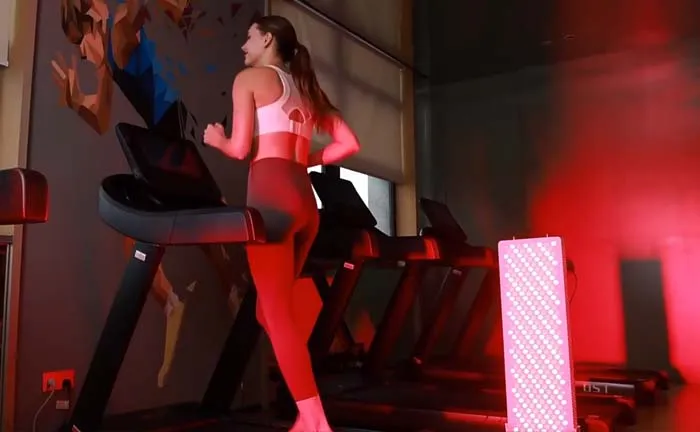
Rise of Home Red Light Therapy Device l Use
As the demand for convenience, privacy, and cost-effectiveness increases, many consumers are opting to invest in at-home Red Light Therapy devices. This trend has been further accelerated by the COVID-19 pandemic, which pushed more people to explore at-home wellness solutions.
Market Overview:
- Growing Demand: The convenience of using red light therapy at home—combined with the ability to customize session times and avoid gym crowds—has made it an attractive option for many. Additionally, at-home devices are often priced more affordably in the long run compared to gym memberships with RLT services. Contact us for red light therapy prices.
- Privacy: Home devices eliminate the need to share equipment with others, providing a more hygienic and private experience.
Technical Comparison:
- Home Devices vs. Gym Equipment: Home red light therapy devices generally use similar technology as those in gyms, with LED lights emitting specific wavelengths of red and near-infrared light. However, gym equipment tends to be more powerful, offering more intensive sessions, often incorporating features like vibration plates for added muscle stimulation.
- Specifications: Home devices are typically more compact and easier to store. They might have lower intensity compared to gym machines, but still provide effective results when used consistently.
Real-World Cases:
- User Feedback: Many users report positive results from red light therapy at home, especially for improving skin health, reducing muscle soreness, and boosting overall mood. However, some individuals find that the lower power of home devices requires longer sessions to achieve the same benefits as gym-based treatments. But the average red light therapy cost per session is very very low. Afforable.
- Effectiveness at Home: Users appreciate the flexibility to perform treatments at any time, but some have noted that they miss the additional features available at gyms, such as vibration therapy or professional supervision.
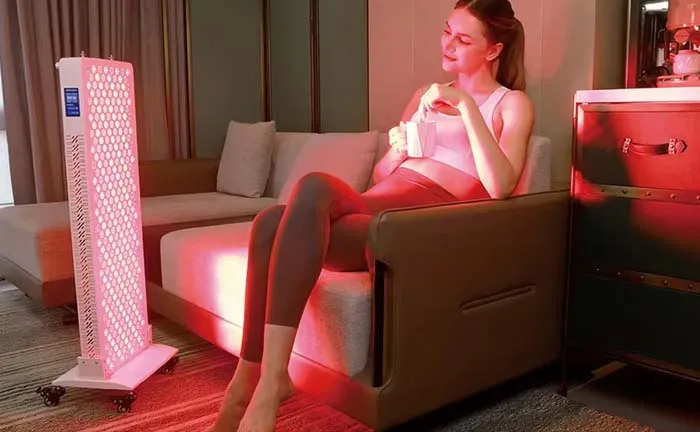
Professional and Medical Use
RLT has also gained traction in professional settings, especially in clinical therapy and post-surgery recovery. The science behind RLT’s effectiveness in medical applications is well-documented, with ongoing research supporting its role in treating various health conditions.
Applications in Clinical Therapy:
- Physiotherapy and Post-Surgery Recovery: RLT is increasingly used in rehabilitation settings to help patients recover faster after surgery or physical injury. By stimulating cellular activity and enhancing blood circulation, RLT can accelerate healing times and improve tissue repair.
- Pain Management: Red Light Therapy is also employed to treat chronic pain conditions, such as arthritis, tendinitis, and carpal tunnel syndrome. It helps by reducing inflammation, alleviating pain, and promoting tissue regeneration.
- Wound Healing: In clinical environments, RLT is used to treat chronic wounds, burns, and surgical incisions. It speeds up the healing process by stimulating fibroblast activity and enhancing collagen production.
Use in Treating Specific Conditions:
- Skin Disorders: RLT is commonly used in dermatology to treat acne, eczema, psoriasis, and other skin conditions. It helps reduce inflammation, kill bacteria, and promote skin healing, making it a versatile tool in dermatological treatment.
- Arthritis: Studies have shown that RLT can reduce the pain and stiffness associated with arthritis, particularly in the joints, by reducing inflammation and improving joint mobility.
User Experiences in Medical Settings:
- Pros:
- Clinical Evidence: Medical professionals increasingly rely on RLT for its proven effectiveness in treating a variety of health conditions.
- Targeted Treatment: In a clinical setting, RLT can be tailored to address specific injuries or conditions, offering personalized therapy options.
- Cons:
- Cost: Medical-grade RLT treatments can be expensive, especially for long-term use. However, insurance coverage may sometimes help offset costs.
- Access: While RLT is widely used in professional settings, it may not always be available in every area or clinic, limiting access for some patients.
Comparative Analysis of RLT Methods
Red Light Therapy (RLT) can be accessed through various methods, each with its advantages and limitations. The choice between gym-based red light therapy services and home devices depends on several factors such as cost, convenience, technical specifications, and individual needs. In this section, we will perform a detailed comparative analysis between gym-based red led light therapy treatments and at-home devices, addressing key aspects such as cost-efficiency, usage frequency, technical differences, and safety considerations.
Gym vs. Home Devices
1. Cost-Efficiency and Convenience
- Gym-Based RLT:
- Cost: Using red light therapy at a gym typically requires a premium membership or additional service fees. For example, Planet Fitness offers red light therapy services through their “Total Body Enhancement” machine, available only to Black Card members, which can cost around $22 per month (plus extra fees for premium services). While this might seem affordable for some, frequent use adds up over time, especially for users who visit the gym several times per week.
- Convenience: Gym-based red light therapy requires members to travel to the facility, which can be inconvenient and time-consuming, especially for those with busy schedules. Furthermore, gym users often face waiting times to use the red light therapy machines, which may reduce the frequency of treatment.
- Home Devices:
- Cost: At-home Red Light Therapy devices are generally a one-time purchase, with prices varying depending on the brand and device specifications. While the initial cost can be higher (ranging from $200 to over $1,000), home devices provide a more cost-effective option in the long term, especially for regular users.
- Convenience: Home devices are incredibly convenient, offering the ability to use red light therapy at any time, without leaving the house. Users can integrate therapy into their daily routine, whether in the morning, after a workout, or before bed, with no additional travel required. This is especially beneficial for people with hectic schedules or those who prefer privacy.
2. Usage Frequency and Hygiene Considerations
- Gym-Based Red Light Therapy:
- Frequency: While gyms offer professional-grade equipment, the frequency of use can be limited due to shared access with other gym-goers. This may affect the ability to integrate red light therapy into a consistent routine, especially during peak hours.
- Hygiene: Publicly shared gym equipment can present hygiene concerns, particularly in high-traffic gyms. Although many gyms take measures to clean their equipment, users may still feel uncomfortable with the idea of sharing red light therapy machines, especially in a post-pandemic world.
- Home Devices:
- Frequency: At-home devices allow users to perform red light therapy as often as they like, without any restrictions. This flexibility encourages consistent use, which is essential for achieving optimal therapeutic results.
- Hygiene: Home devices are much more hygienic since they are for personal use only. Users can clean and maintain their equipment as needed, ensuring a safe and sanitary experience with each session.
3. Privacy Advantages of Home Devices
- Gym-Based Red Light Therapy: While gym red light therapy sessions can provide a professional environment, the lack of privacy can be a drawback for some users. Many people prefer to have personal, uninterrupted sessions, particularly for treatments related to skin or body aesthetics.
- Home Devices: One of the key advantages of at-home red light therapy devices is privacy. Users can enjoy therapy in the comfort of their own home, without the concern of being watched or sharing equipment with others. This is particularly beneficial for individuals who feel self-conscious about cosmetic treatments or those who want to focus on recovery without distractions.

Technical and Functional Comparison
1. Key Differences in Wavelength, Energy Density, and Treatment Area
- Gym-Based Red Light Therapy:
- Wavelength: Gym equipment typically offers higher-powered devices with a broader wavelength range (ranging from 600 to 1,100 nanometers), which can reach deeper into tissues. These devices are designed for professional-grade results, providing more intense sessions.
- Energy Density: Gym machines usually have higher energy densities, allowing for faster results. The machines are built to handle multiple users, providing more powerful therapy in a shorter time.
- Treatment Area: Gym-based devices often cover a larger treatment area, allowing for more efficient sessions. Machines like Planet Fitness’s “Total Body Enhancement” can treat the entire body in a single session.
- Home Devices:
- Wavelength: Home devices typically offer a more limited wavelength range, primarily focused on red and near-infrared light (600-900 nm). While effective, they may not penetrate as deeply or as broadly as professional equipment.
- Energy Density: Home devices generally have lower energy densities to maintain safety and allow for prolonged usage. While this makes them less powerful, consistent use over time can still provide significant results.
- Treatment Area: Home devices usually cover a smaller area (e.g., facial devices or handheld panels). While they are effective for targeted therapy, they may require multiple sessions to treat larger areas of the body.
2. Additional Features Like Vibration Plates and Combined Therapies
- Gym-Based RLT: Some gym machines, such as those used by Planet Fitness, combine RLT with vibration plates to enhance muscle stimulation and circulation. The vibration plate can stimulate muscles, boost circulation, and potentially aid in muscle recovery. This combination can improve the overall effectiveness of the therapy, especially for those recovering from workouts or injury.
- Home Devices: Most home devices are focused solely on providing RLT, and additional features like vibration plates or combined therapies (e.g., heat or infrared light) are rare. However, users can supplement RLT sessions with other recovery tools, such as foam rollers or massage devices, to enhance the therapeutic experience.
Safety and Suitability
1. Potential Side Effects and Contraindications
- Gym-Based RLT: RLT is generally considered safe when used correctly, but gym users should be mindful of the intensity of the treatments. Some individuals may experience mild skin irritation or redness, especially with extended use. Gym-based RLT treatments may not always be suitable for individuals with certain medical conditions, such as photosensitivity, or those who are pregnant.
- Home Devices: Home RLT devices are often designed with safety in mind, incorporating adjustable settings to control the intensity and duration of treatments. However, users should always follow manufacturer guidelines to avoid overexposure. Pregnant women and individuals with conditions like lupus or photosensitivity should consult a healthcare provider before using RLT, as overexposure to light may worsen some conditions.
2. Recommendations for Athletes, Beauty Seekers, and Recovery Patients
- Athletes: For athletes, both gym-based RLT and home devices can be effective for muscle recovery, pain reduction, and injury prevention. Gym devices may offer a more intensive experience, which is beneficial after a particularly strenuous workout. However, home devices are convenient for daily use, ensuring consistent recovery and reduced downtime.
- Beauty Seekers: For those using RLT for skin rejuvenation, both options are viable. Gym-based treatments may offer more powerful devices that provide quicker results, while home devices provide privacy and the ability to perform treatments at your own convenience.
- Recovery Patients: For patients recovering from surgery or injury, professional-grade RLT at the gym may provide faster results due to higher energy density and intensity. However, home devices are an excellent choice for daily maintenance and long-term recovery once the initial treatment phase has passed.
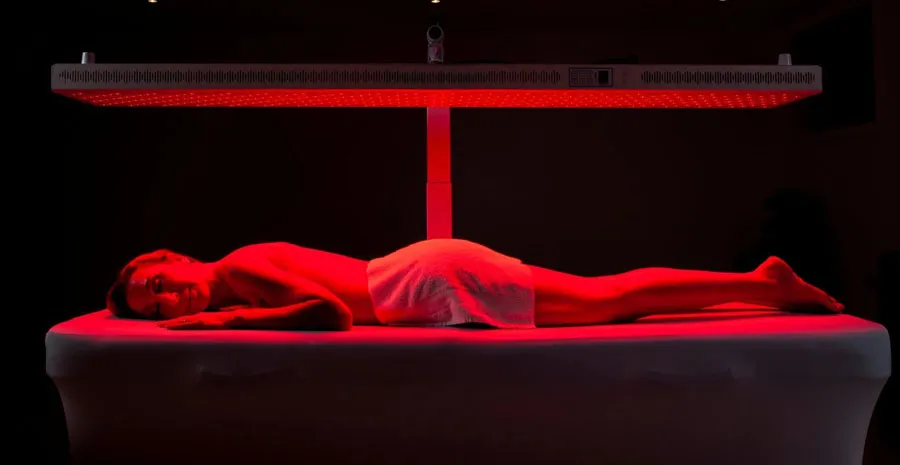
How to Choose the Right RLT Method
Selecting the right Red Light Therapy (RLT) method depends on a variety of personal factors, including your goals, budget, frequency of use, and the specific features that best meet your needs. Whether you’re considering a gym-based RLT service or investing in a home device, making an informed decision can optimize the results you achieve from your therapy.
Assessing Personal Needs
1. Goals: Beauty-Focused vs. Health and Recovery
- Beauty-Focused Goals:
- If your primary aim is to address skin concerns such as wrinkles, fine lines, acne, or general skin rejuvenation, Red light therapy can be highly effective. Red light stimulates collagen production, which helps in reducing the visible signs of aging and improving skin elasticity. Having red light therapy can also improve skin tone, texture, and overall appearance.
- Ideal Method: For beauty-focused goals, a home device might be a convenient and cost-effective option. You can treat specific areas of your face or body, such as the skin around your eyes or neck, at your own convenience. High-quality home devices designed for facial treatments or handheld panels can provide targeted results, without the need for frequent gym visits.
- Health and Recovery Goals:
- If your main objective is to enhance muscle recovery, reduce pain, manage inflammation, or promote healing after injury or surgery, Infrared red light therapy can significantly aid in accelerating these processes. It works by enhancing mitochondrial function, boosting ATP production, and promoting tissue repair.
- Ideal Method: Gym-based red light therapy devices, with their higher energy output and more powerful treatment capabilities, may be more suitable for intensive recovery sessions. For long-term recovery or for individuals who have ongoing health needs, combining gym treatments with at-home devices could provide the most comprehensive approach.
2. Budget and Frequency Considerations
- Budget:
- Gym-Based Red Light Therapy: Gym memberships with RLT access can be affordable in the short term, especially for casual users. However, for those who plan to use RLT regularly, the costs can quickly add up, especially with premium memberships required for access to machines like Planet Fitness’s “Total Body Enhancement.” These memberships often have monthly fees ranging from $10 to $30, but this doesn’t include additional costs for RLT sessions or premium features like vibration plates.
- Home Devices: While at-home devices have a higher upfront cost, they offer long-term cost savings for those who use RLT frequently. Home devices typically range from $200 to $1,000+, depending on their features and power output. This one-time investment can be more affordable for individuals who plan to use RLT regularly. Moreover, home devices offer no additional recurring costs or membership fees, making them more budget-friendly in the long run.
- Frequency:
- For Skin Care and Beauty: If you’re using red light therapy to improve your skin, reduce wrinkles, increase elasticity, or just give your skin a nice glow, 2 to 3 times a week is usually plenty. You don’t need to do it every day. The skin is a slower responder, so a few sessions per week will do the trick. Typically, each session should be 10 to 20 minutes—just adjust based on the device’s intensity.
- For Muscle Recovery and Pain Relief: If you’re using RLT to speed up muscle recovery, reduce soreness after a workout, or help with injury recovery, you might want to go for every day use, especially after intense exercise. The more frequently you use it, the better it helps with muscle fatigue and repair. For each session, aim for 20 to 30 minutes—again, depending on the device and where you’re treating.
- For General Health and Immunity Boost: If you’re using RLT for general wellness, like reducing inflammation, improving circulation, or supporting your immune system, about 3 to 4 times a week is usually enough. Consistent use will help keep you feeling better overall and can reduce chronic pain or discomfort over time.
- Start Slow, Then Increase FrequencyWhen you’re first starting out with red light therapy treatment, it’s a good idea to ease into it. Your body may need some time to adjust, especially if you’ve never done anything like this before. Start with 2 to 3 sessions per week and see how your body responds. As you get more comfortable, you can increase the frequency to match your needs and goals.
- Don’t Overdo ItWhile red light therapy is generally safe, like with anything, you don’t want to overdo it. If you use it too much, your skin might feel a little irritated or dry, or you could experience some mild redness. It’s important to listen to your body. If you notice any discomfort, it might be a good idea to reduce how often you’re using it or shorten your sessions.
- Different Devices, Different FrequenciesKeep in mind that not all red light therapy devices are created equal. Home devices tend to be less powerful, so you might need to use them more often—like once a day or every other day. On the other hand, gym devices usually have more power and cover a larger area, so they can be used less frequently—2 to 3 times a week is usually enough. Always check the instructions or consult the manufacturer’s recommendations for your specific device to make sure you’re using it correctly.
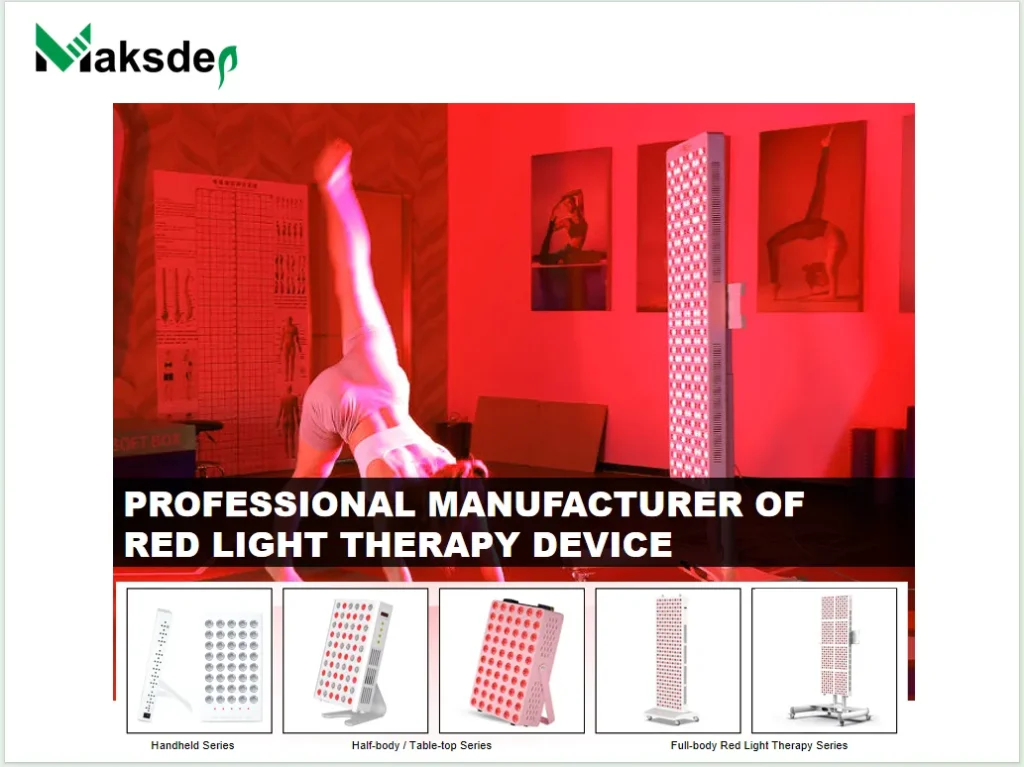

Market Trends and Future of Red Light Therapy: Planet Fitness vs. At-Home Use
Red Light Therapy at Planet Fitness: A Growing Trend
Planet Fitness has really jumped on the Red Light Therapy bandwagon with its “Total Body Enhancement” machines. These machines combine RLT with a vibration plate, making them super popular among gym-goers. This offering is available to Black Card members and is marketed as a way to enhance post-workout recovery, reduce muscle soreness, and even improve skin appearance. It’s especially attractive for those looking for a quick, effective way to boost their wellness without committing to a long spa visit.
Planet Fitness is betting that by offering this service, more people will be drawn to the gym for the additional wellness benefits beyond just fitness. It’s clear that gyms like Planet Fitness are not just about fitness anymore; they are becoming wellness hubs, offering a mix of treatments to appeal to a broader audience.
The Shift to At-Home Devices
While red light therapy is gaining ground in gyms, more and more people are opting for at-home devices for convenience, privacy, and cost-effectiveness. At-home RLT devices are becoming more advanced, affordable, and accessible than ever. The convenience of using these devices in the comfort of your home, without having to deal with busy gym schedules or membership costs, is a major selling point for many.
Market research shows that the demand for home RLT devices is expected to keep growing. Consumers are looking for ways to incorporate wellness into their daily routines without stepping out of the house. At-home RLT allows users to integrate therapy into their schedules without waiting for an open slot at the gym or dealing with crowded machines. Plus, home devices are a one-time investment, whereas gym memberships can become costly in the long run.
The growth of e-commerce and the increasing popularity of health and wellness trends like home fitness and self-care mean that home RLT devices are likely to keep gaining in popularity. As technology improves, these devices will become even more effective, making them a competitive alternative to gym-based RLT machines.
The Future of RLT: A Balancing Act
As RLT continues to evolve, we’re likely to see more gyms offering RLT services, especially as people begin to prioritize recovery and wellness alongside fitness. However, the growth of at-home devices is also a sign that consumers are becoming more proactive about their health and wellness at home. With both gym-based and home-based RLT options on the market, it’s all about what fits best with your lifestyle, preferences, and goals.
Whether you’re a fitness enthusiast who wants to enhance recovery at the gym or someone who prefers the convenience of home treatments, the market is growing to accommodate all kinds of users. As more people discover the benefits of RLT, it’s clear that this therapy will become an increasingly popular tool for wellness and recovery in the years to come.
We have wide red light therapy devices for different needs.
- Powerful red light therapy devices (For home & Fitness centre)
- Wearable red light therapy devices (From head to foot)
